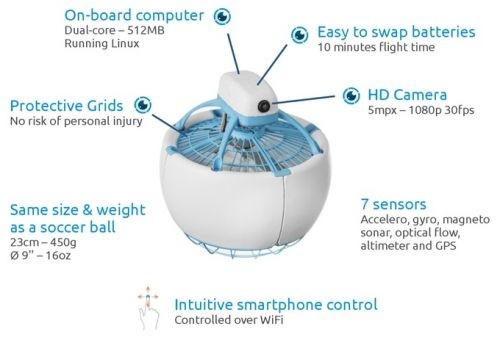|
Think that you know about gravity? Think again – research into gravitational engineering is moving rapidly ahead on a number of fronts and breakthroughs are already beginning to happen. Antigravity follows close behind, as we learn to manipulate this mysterious force to build a new generation of space technology. Here are a few of the top ideas to keep your eye on as the research progresses in the new year…
Next-Generation Lifters: The Biefeld-Brown Effect ‘Lifters’ seem to be popping up everywhere these days – including schools, universities, science-fairs, and television. Gravitational Death Rays: The infamous Russian gravity scientist Dr. Eugene Podkletnov has a new experiment, and it’s supported by theory (several of them, in fact). AC-Gravity Tractor-Beams: If Podkletnov is busy with a gravity-beam, then who’s tending the farm on the rotating superconductors that made him famous? The answer: Dr. Ning Li. Einstein’s UFT Antigravity: What if you heard a story so outlandish that you knew nobody would believe it? Now what if you heard the same story from several different sources, and started finding background info & physics research that backed it all up? The Searl Effect: John Searl is known to many as “the father of modern Antigravity”. His masterpiece, the SEG, saw more research in 2004 than since the 1980’s! The Hutchison Effect: You’ve seen it on TV – John Hutchison, the man who makes objects spontaneously levitate in his lab, and creates strange fields that melt-metal at room temperature. Mercury Plasma Antigravity: These stories about ‘black triangles’ are just a bunch of nonsense, right? Not so fast – the means of propulsion described by Edgar Fouche, Mark McCandlish and others turns out to have some very real scientific backing… De Aquino’s ELF Antigravity: Brazilian Professor Fran De Aquino has been pursuing an elusive goal – a gravity shield based on Extra Low Frequency (ELF) waves, that he believes effectively block incoming gravitons. The result? An ELF craft would be effectively “immune” to gravity, and possibly inertia as well. If that's not enough to get your anti-gravity reactors pumping, here's another 515 pages of Anti-Gravity material in the form of a PDF - "Secrets of Anti-Gravity Propulsion" by Paul LaViolette, PH.D.
0 Comments
Like it or not we’re rapidly moving into the world of 5G, or 5th generation cellular telecommunications. Why? Because the frequency bandwidths used currently by cell phones and similar technologies are becoming saturated. And also because we live in a world where people want more. 5G, and the Internet of Things (IoT) that goes with it, promises to give us more.
But more what? Super-Fast Download Speeds 5G and IoT promises to connect us in our homes, schools, workplaces, cities, parks and open spaces to over a trillion objects around the world. It promises cars that drive themselves, washing machines that order their own washing powder and softener plus of course super fast downloads and streaming. According to Fortune.com 5G will support at least 100 billion devices and will be 10 to 100 times faster than current 4G technology. (4G was already about 10 times faster than 3G). It’ll bring download speed up to 10 Gigabits per second. This would let us have an entire building of people send each other data in close to no time, thus improving productivity. What is 5G? 5G offers mind-blowing data capabilities, practically unrestricted call volumes and near infinite data broadcast. It does this by 5G using largely untapped bandwidth of the millimeter wave (MMW), which is between 30GHz and 300GHz, as well as some lower and mid-range frequencies. This table compares the different generations of mobile technologies: Posted by A.I. in futuristic news, energy, space (AA) The Wendelstein 7-X is the most efficient nuclear fusion reactor scientists have ever created. Some are asking what that could mean for the future of energy? Learn more: https://en.wikipedia.org/wiki/Wendelstein_7-X Posted by A.I. in Alternative, Futuristic News (AA) DeepMind is the world leader in artificial intelligence research and its application for positive impact. Posted in drones, futuristic news, technology A Belgian startup called Fleye has built a whole new kind of drone, one that won't actually hurt you if you accidentally come into contact with it. Safe, fun and autonomous, Fleye plans to reinvent the future of flying robots thanks to its open API and SDK. An open API, sometimes referred to as a public API, is an application program interface that provides a developer with programmatic access to a proprietary software application. According to Fleye, the classic drone design has many shortcomings; Fleye has gone back to the drawing board to imagine the future of autonomous flying robots. The resulting product is safer, more robust and easier to use.
|
News Watch
Mind-opening news articles, editorials, videos & apparel that inspire our readers and help liberate them from the status quo. Stay informed.
Write For UsSpace WatchTop NewsNews Watch Categories
All
|
|
|
HAVE A TIP OR STORY TO TELL? JOIN TODAY & SHARE YOUR STORY!
If you have a breaking news tip or idea, please email: [email protected] Apparently Apparel® is a registered trade name and part of the ZOAT International® brands network. © 2007-2023. All Rights Reserved. Privacy Policy. All art & news content posted on this site is commentary or opinion and is protected under Free Speech. ApparentlyApparel.com is not responsible for content written by contributing artists, authors or news feeds. The information on this site is provided for educational and entertainment purposes only. It is not intended as a substitute for professional advice of any kind. ApparentlyApparel.com assumes no responsibility for the use or misuse of this material.
|
|











